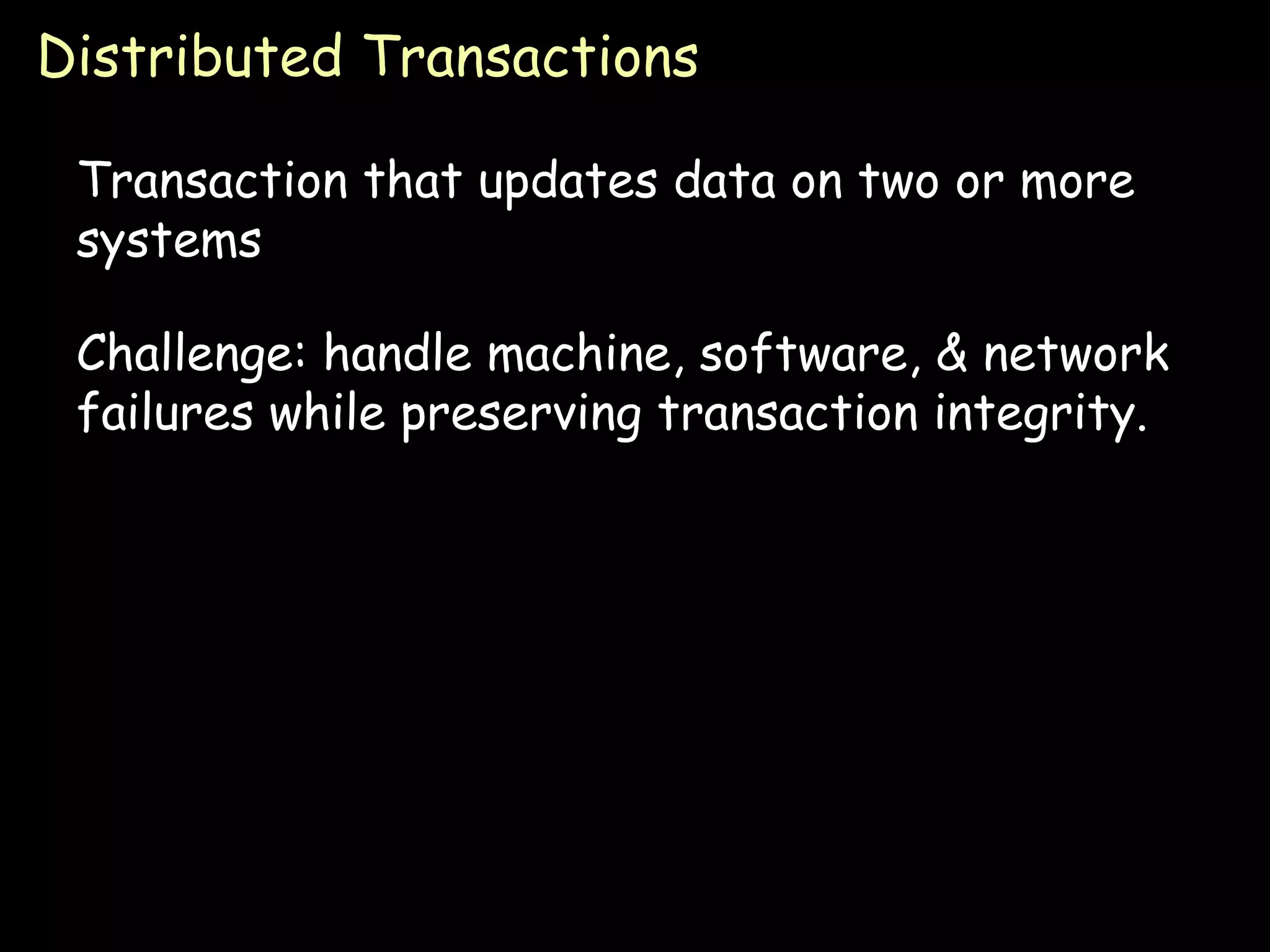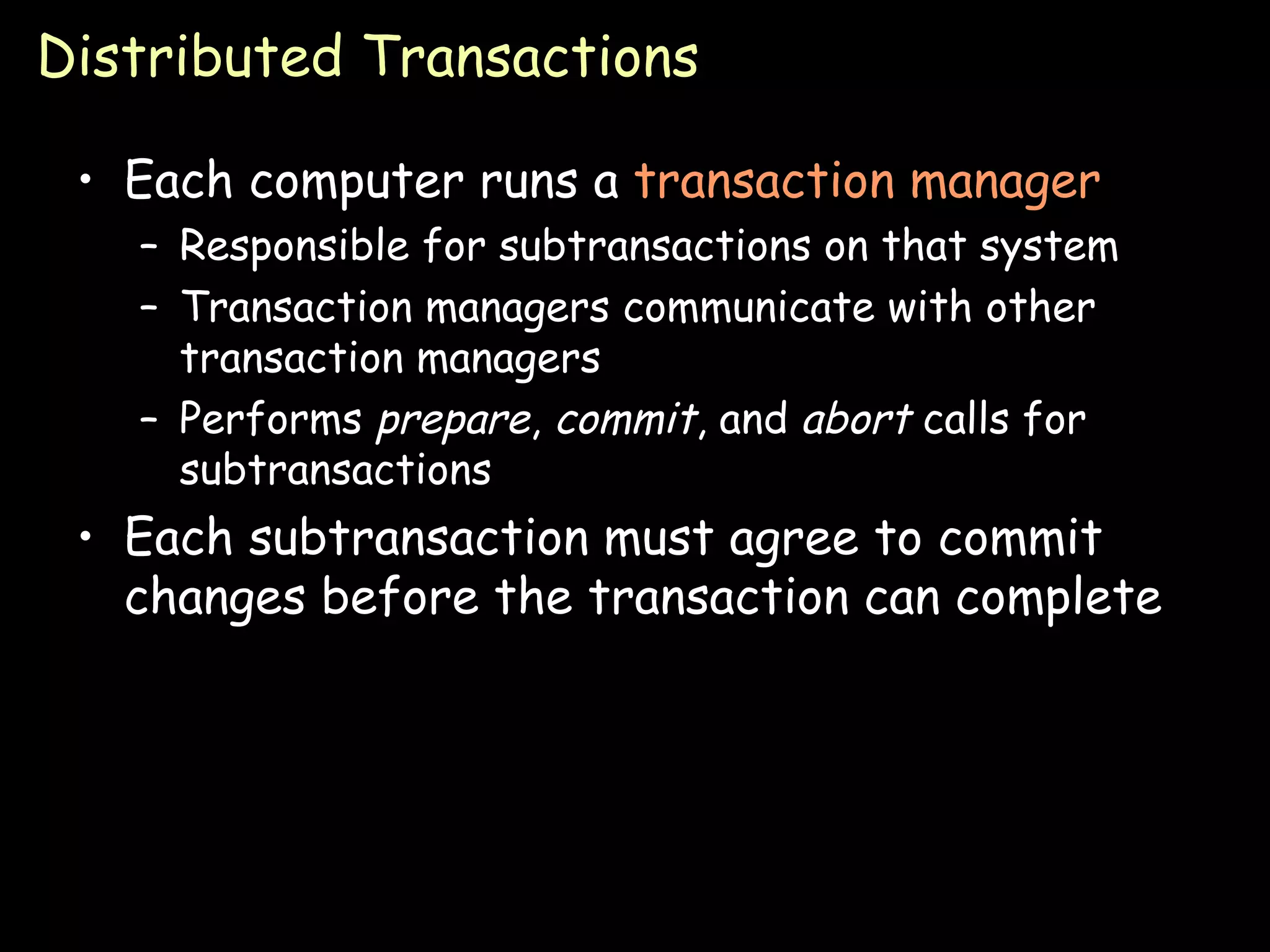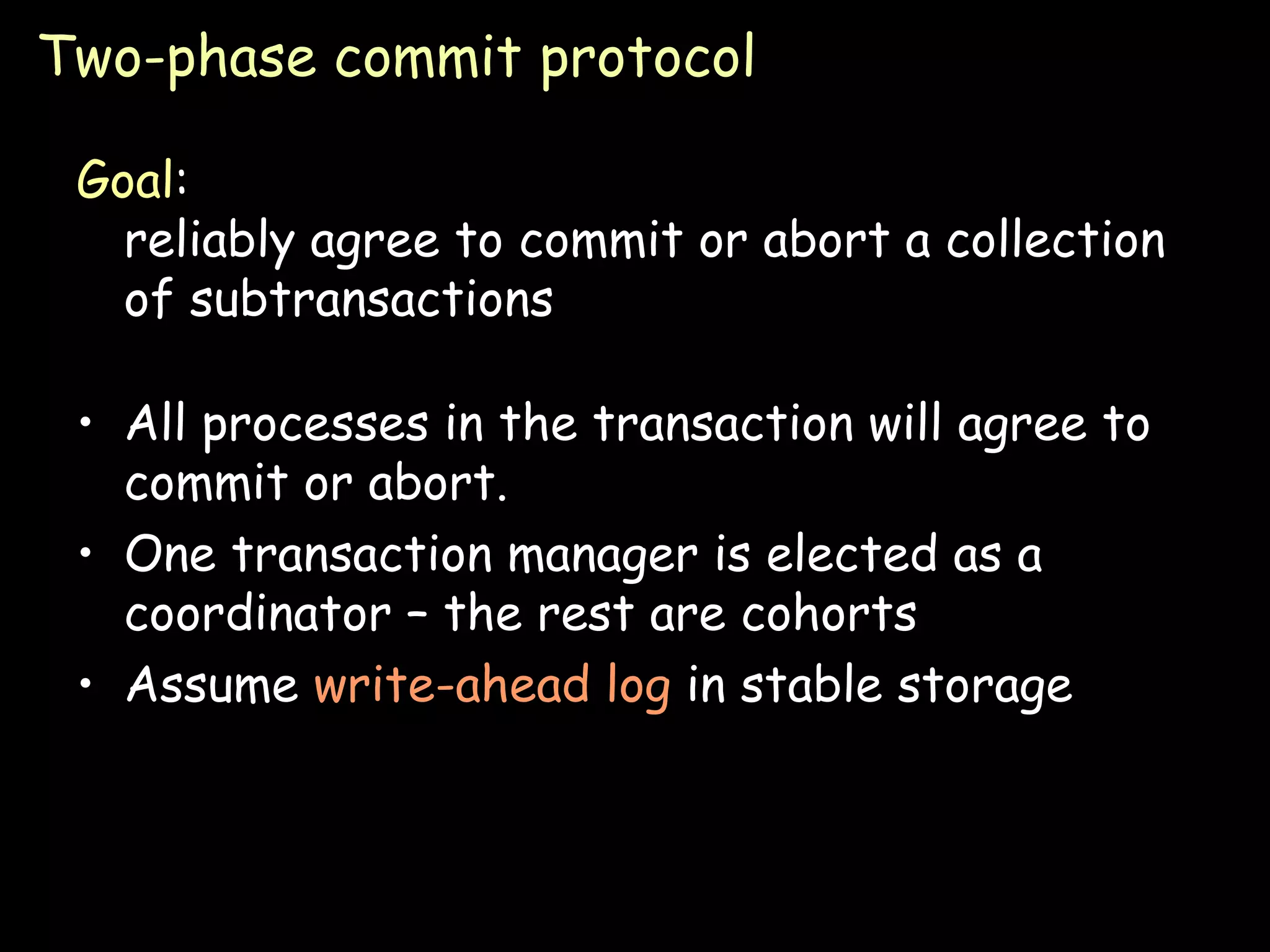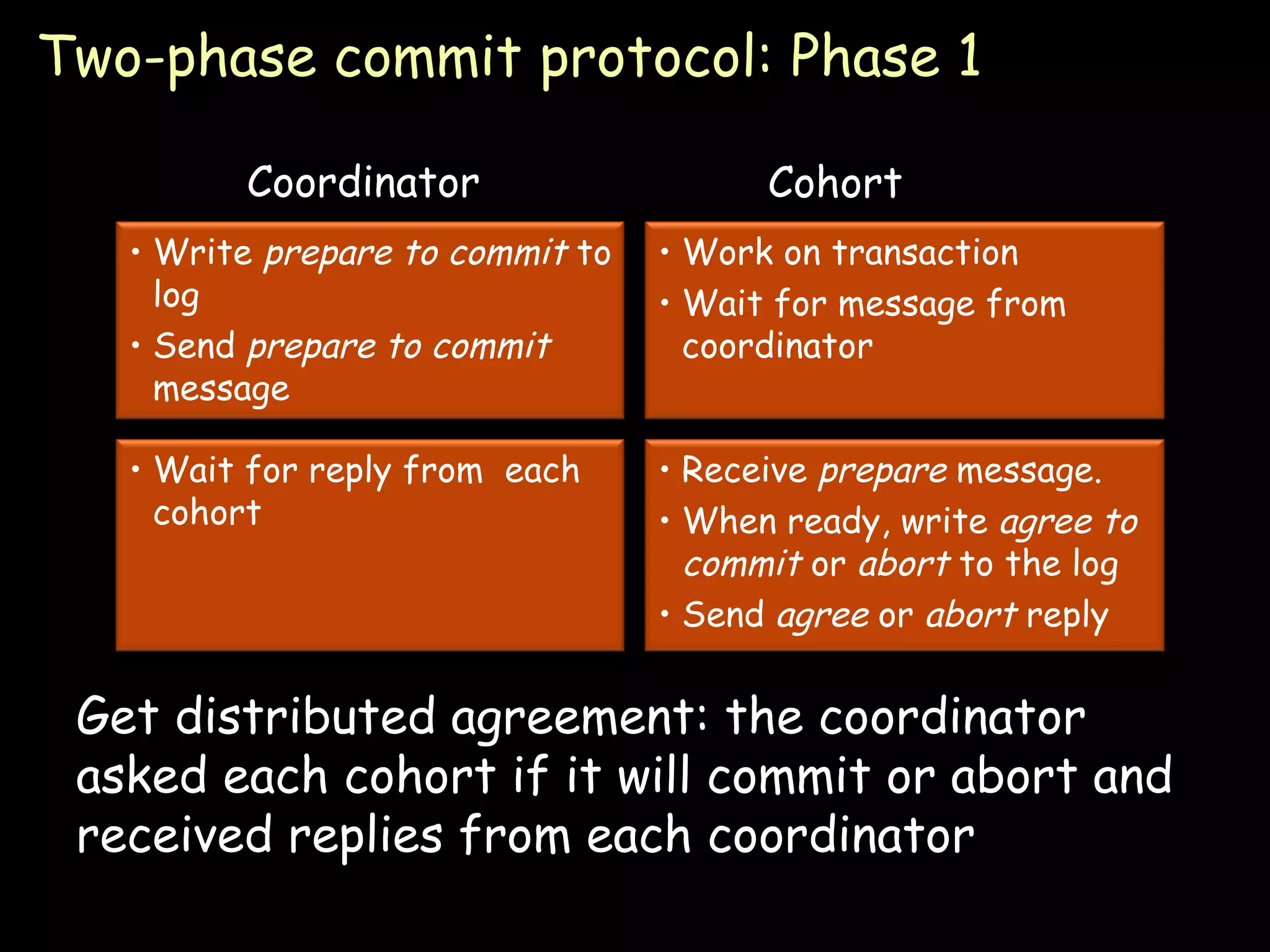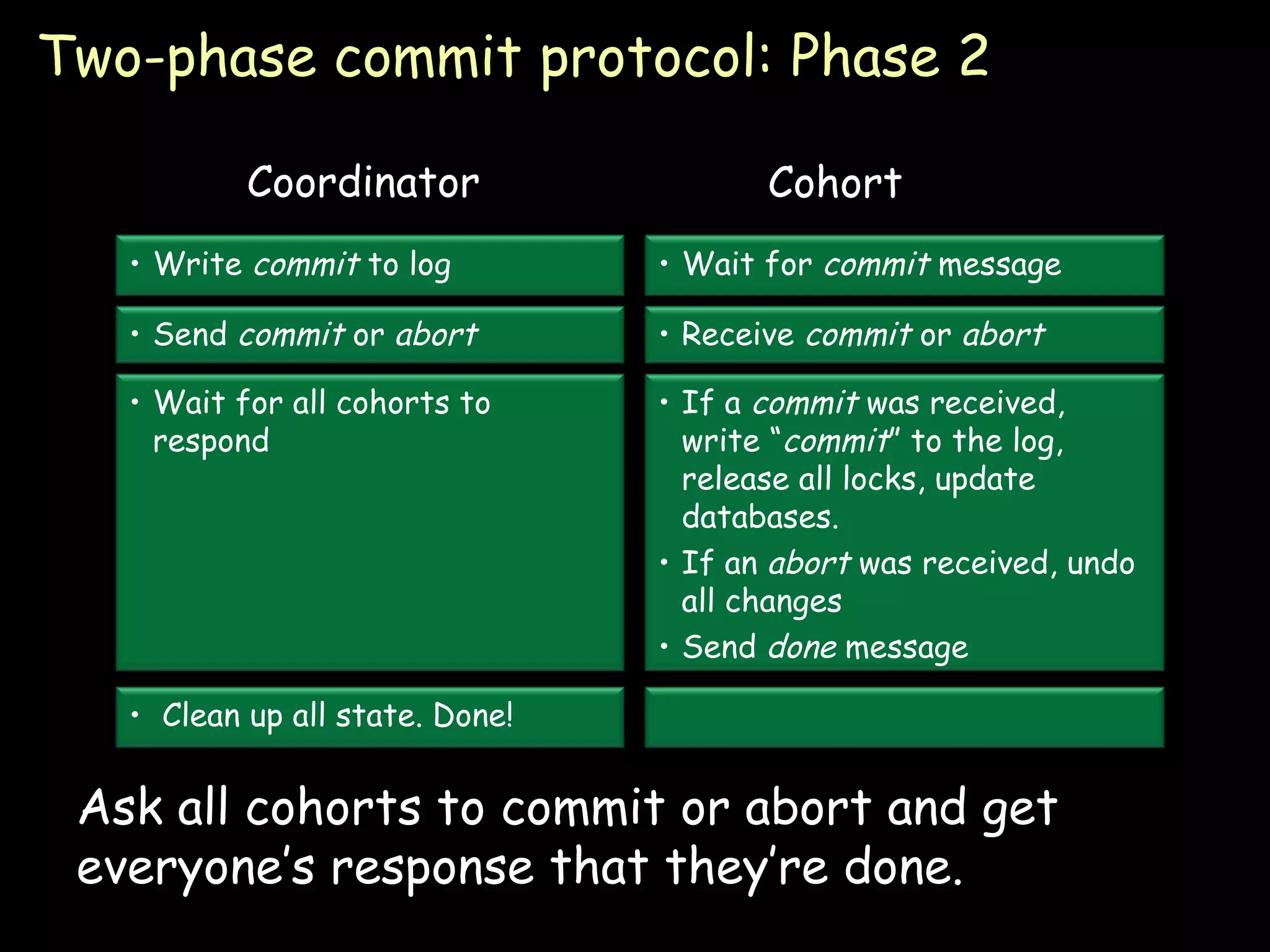Distributed transactions allow operations that update data across multiple computer systems to be treated as a single transaction. There are several key properties transactions must have including being atomic, consistent, isolated, and durable (ACID). To handle failures while preserving transaction integrity, a two-phase commit protocol is used where transaction managers coordinate and ensure all subtransactions commit or abort together.
![Distributed Transactions Paul Krzyzanowski [email_address] [email_address] Distributed Systems Except as otherwise noted, the content of this presentation is licensed under the Creative Commons Attribution 2.5 License.](https://image.slidesharecdn.com/08-transactions-090902071106-phpapp01/75/Transactions-Distributed-computing-1-2048.jpg)
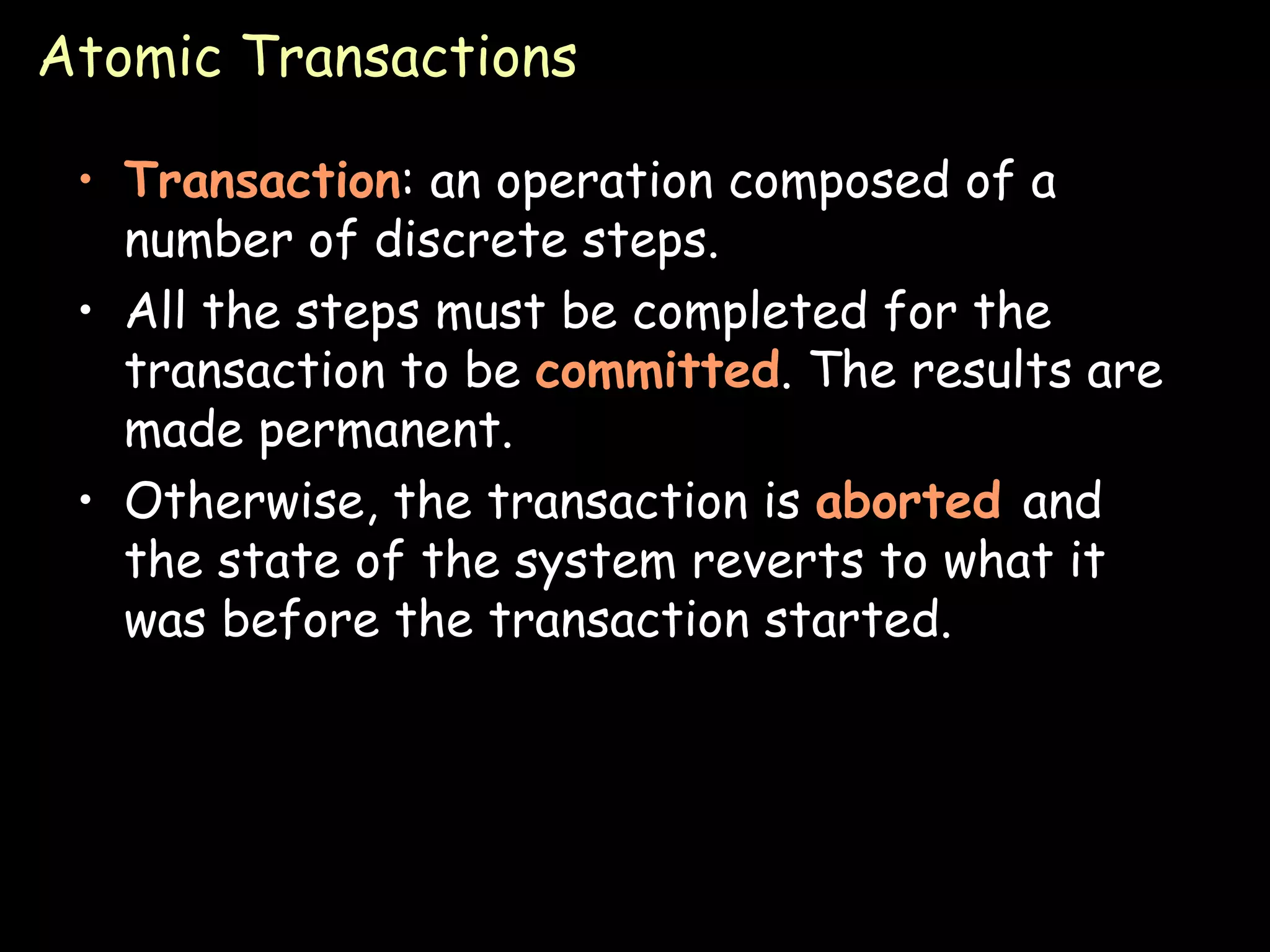

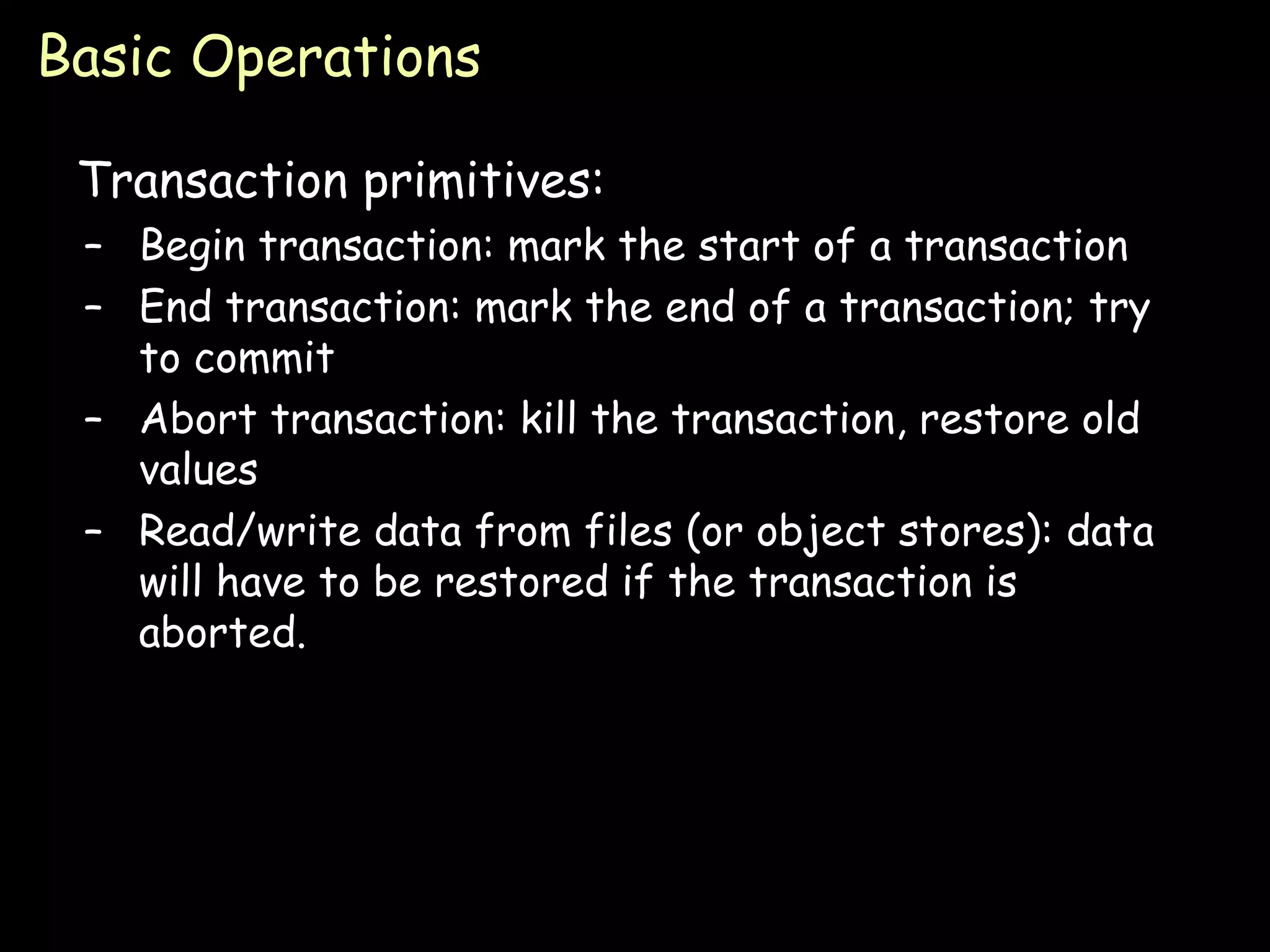
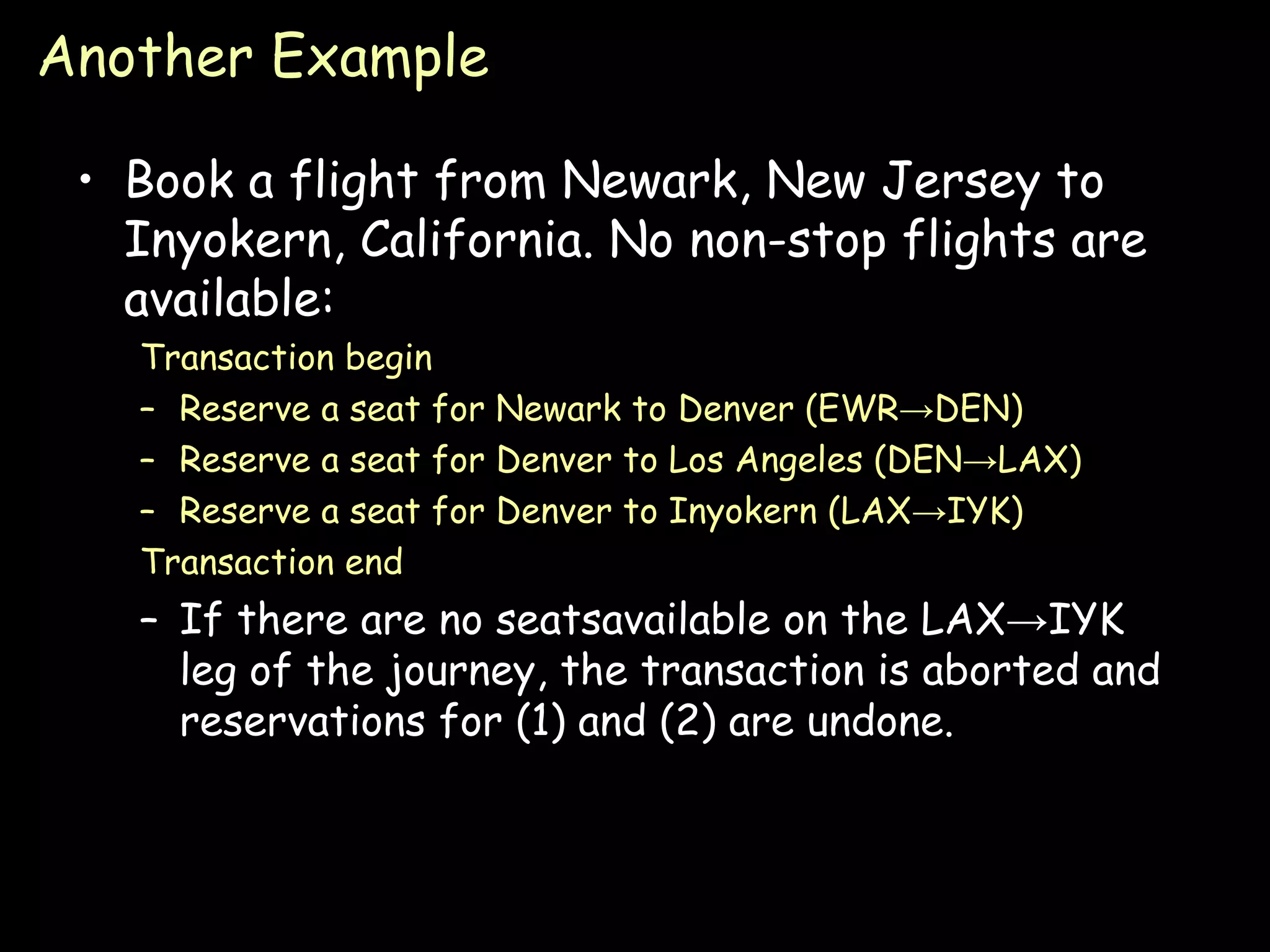
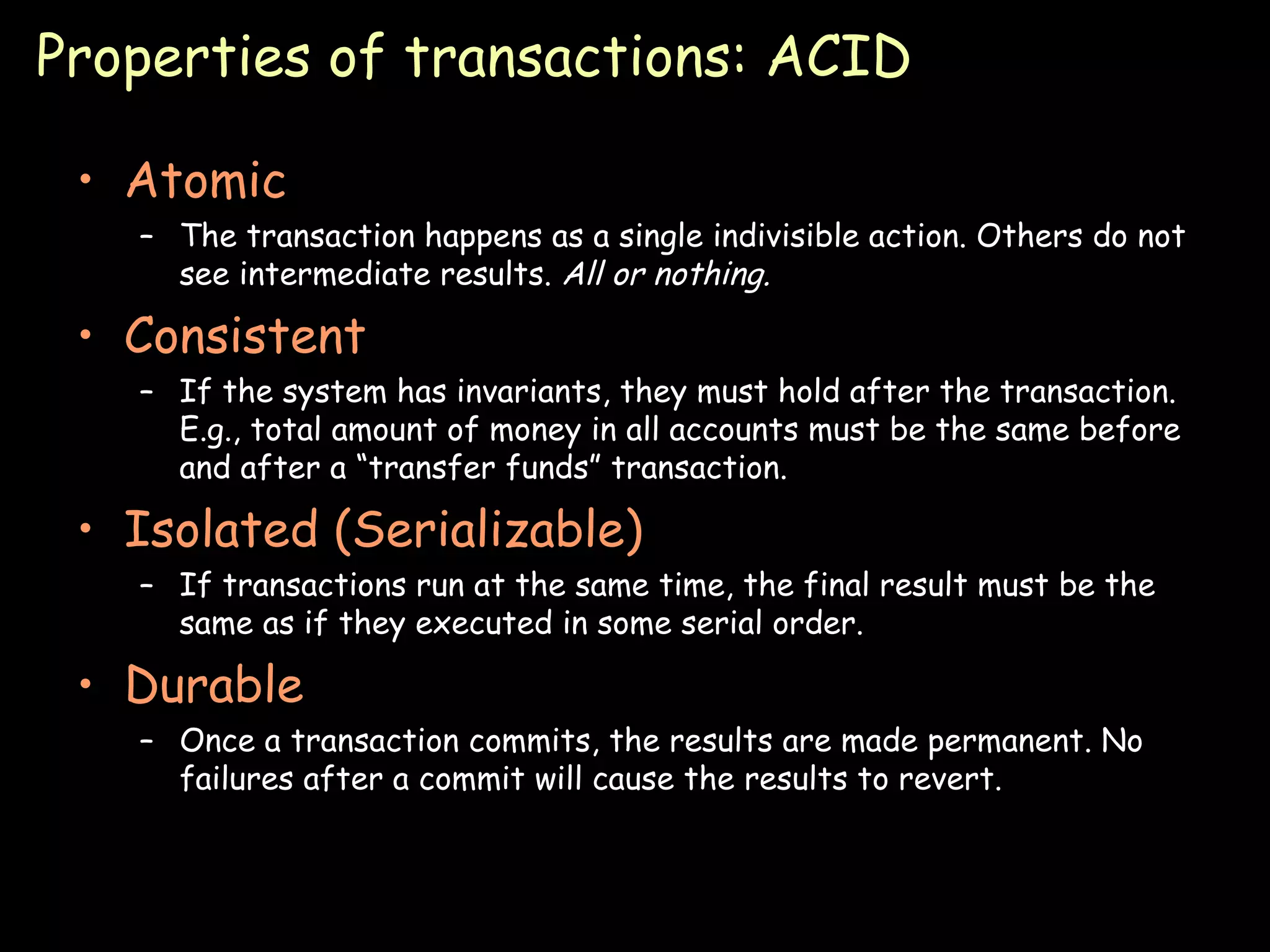
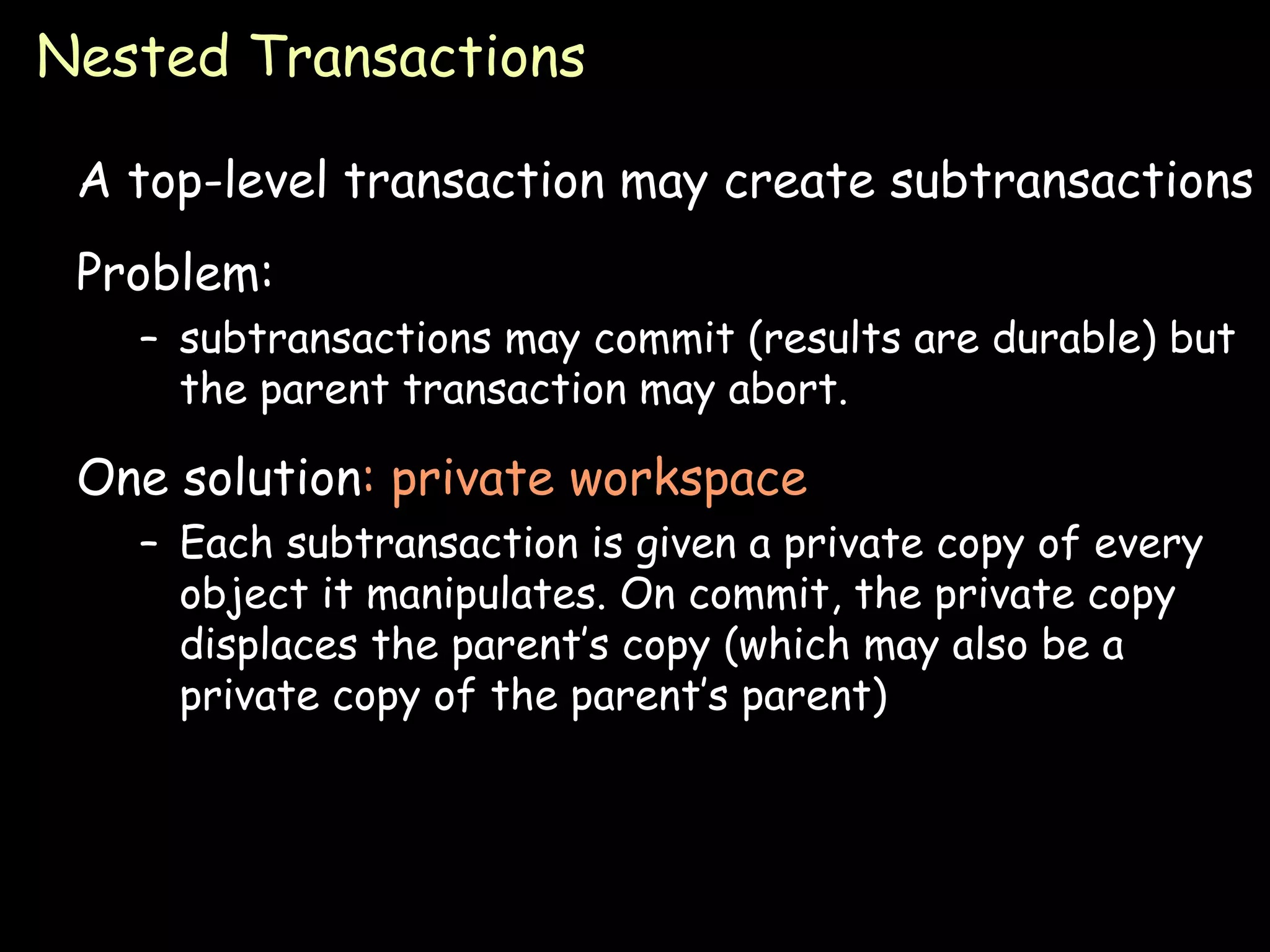
![Implementing a private workspace [PLAN A] Consider a Unix-like file system: duplicate the file’s index (i-node) Create new block when it gets modified by the transaction: shadow block Index copy points to the shadow block On abort: remove shadow blocks and private index On commit: update parent’s index with private index attributes -> Block 329 -> Block 251 -> Block 783 -> Block 696 myfile Block 329 Block 251 Block 783 Block 696 attributes -> Block 329 -> Block 933 -> Block 783 -> Block 936 myfile’ Block 933 Block 936](https://image.slidesharecdn.com/08-transactions-090902071106-phpapp01/75/Transactions-Distributed-computing-8-2048.jpg)
![Implementing a private workspace [PLAN B] Use a writeahead log ( intentions list ) Keep a log in stable storage Before making any changes to the object, write a record to the log identifying {transaction ID, object ID, old value, new value) If transaction commits: Write a commit record onto the log If transaction aborts Use log to back up to the original state: rollback Stable storage : data persists even if the system or application crashes.](https://image.slidesharecdn.com/08-transactions-090902071106-phpapp01/75/Transactions-Distributed-computing-9-2048.jpg)
